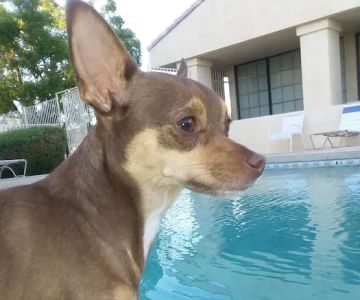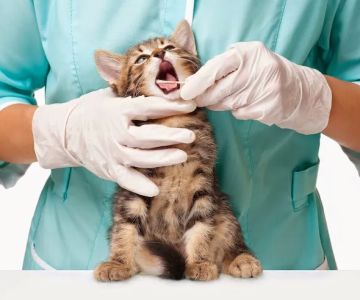Understanding the Importance of Grooming for Long-Haired Dogs
As a proud pet owner of a long-haired dog, you may already be aware of how important regular grooming is to maintain their health and appearance. Long-haired dogs, while absolutely adorable, require a bit more attention than their short-haired counterparts. Grooming goes beyond just aesthetics—it’s essential for the dog’s comfort and well-being. Long, flowing coats are prone to tangling, matting, and buildup of dirt, which is why maintaining a proper grooming routine is crucial.
But where do you start? There’s so much more to grooming than just brushing. From choosing the right tools to knowing when to schedule professional grooming, this guide will cover everything you need to know to keep your long-haired dog looking and feeling their best. Let’s dive into the top grooming tips that will help ensure your dog’s coat stays shiny, healthy, and free from irritation.
1. Brushing: The Foundation of Grooming for Long-Haired Dogs
The first step in grooming a long-haired dog is regular brushing. Long coats tend to tangle and mat easily, and brushing helps to prevent that. However, it’s important to use the correct brushing technique. Start by selecting the right brush for your dog’s coat type. Slicker brushes work well for most long-haired dogs, as they can reach deep into the coat to remove tangles and mats. For dogs with finer hair, you may want to use a softer brush to prevent causing any discomfort.
How often should you brush your dog? The answer depends on the breed and length of the coat. Generally, long-haired dogs should be brushed at least once a day to prevent mats from forming. Some dogs may require more frequent brushing, especially during shedding seasons when hair becomes more likely to tangle.
2. Bathing: Keeping Your Dog Clean Without Overdoing It
Bathing your long-haired dog is another essential part of their grooming routine. However, it’s important to avoid over-bathing, as it can strip the natural oils from their coat and skin, leading to dryness and irritation. A bath every 4 to 6 weeks should be sufficient for most dogs, but this can vary depending on your dog’s activity level and how much dirt they collect.
When bathing your dog, use a shampoo that is specifically formulated for pets. Look for a gentle, moisturizing shampoo that won’t dry out their coat. After bathing, use a conditioner to help maintain the softness and shine of their hair. Remember to thoroughly dry your dog after a bath, as leaving them wet can lead to skin infections, especially in areas where the hair is dense.
3. Trimming: Keeping Your Dog’s Coat Healthy
Even with regular brushing, long-haired dogs may need periodic trims to keep their coat in optimal condition. Trimming not only helps maintain the length and shape of your dog’s coat, but it also prevents the formation of mats in difficult-to-reach areas, such as behind the ears and under the armpits.
For dogs with particularly thick or dense coats, consider taking them to a professional groomer for a trim every few months. However, if you're comfortable doing it yourself, you can invest in quality grooming scissors and clippers to trim the hair between professional sessions. Be sure to trim carefully and keep the hair evenly cut to avoid uneven spots that can lead to further tangling.
4. Nail Care: An Overlooked but Essential Part of Grooming
While you may focus on your dog’s coat, don't forget about their nails. Long nails can be uncomfortable for your dog and may even cause injury or infection. Regular nail trimming is essential for your dog's overall health and comfort. Ideally, your dog’s nails should be trimmed every 2 to 3 weeks.
If you're nervous about trimming your dog’s nails yourself, consider using a professional groomer or veterinarian. They have the tools and expertise to trim your dog’s nails safely without causing any pain or discomfort. If you do choose to trim the nails yourself, make sure to use proper nail clippers designed for pets and be mindful not to cut too close to the quick, which can cause bleeding.
5. Managing Shedding: Reducing Hair Everywhere
Shedding is a natural process for all dogs, but it can be especially noticeable in long-haired breeds. Managing shedding requires consistent grooming and care. Regular brushing, as mentioned earlier, is key to removing loose hair before it has a chance to fall around your house.
In addition to brushing, consider using specialized deshedding tools designed to help remove loose hair from the undercoat. These tools are particularly effective for breeds that shed heavily, like Golden Retrievers or German Shepherds. You may also want to adjust your dog’s diet, as a high-quality, balanced diet can improve coat health and potentially reduce shedding.
6. Professional Grooming: When to Seek Help
While at-home grooming is important, there are times when a professional groomer is necessary. For some long-haired dogs, especially those with very thick coats or specific styling needs, regular visits to a groomer may be essential. Groomers have the experience and equipment to handle difficult coats and ensure your dog’s grooming needs are met.
If you’re not confident in your ability to trim or manage mats on your dog, a professional groomer can provide you with the right care and advice. They can also help with special grooming needs, such as dematting, coat styling, or handling any skin issues that may arise. It’s important to find a trustworthy groomer who has experience with long-haired dogs to ensure the best care for your pet.
Conclusion: Enjoying a Beautiful, Healthy Coat
Grooming a long-haired dog may require a bit more time and effort, but the rewards are worth it. With proper brushing, bathing, trimming, and nail care, you can ensure that your dog’s coat remains healthy and beautiful. Regular grooming not only helps your dog look great, but it also prevents discomfort caused by mats, tangles, and dirt buildup.
If you are ever unsure about grooming your dog, remember that professional help is always available. From expert groomers to veterinarians, there are many resources at your disposal to keep your long-haired dog in tip-top shape. Enjoy the bond you share with your pet as you keep them healthy and happy!











